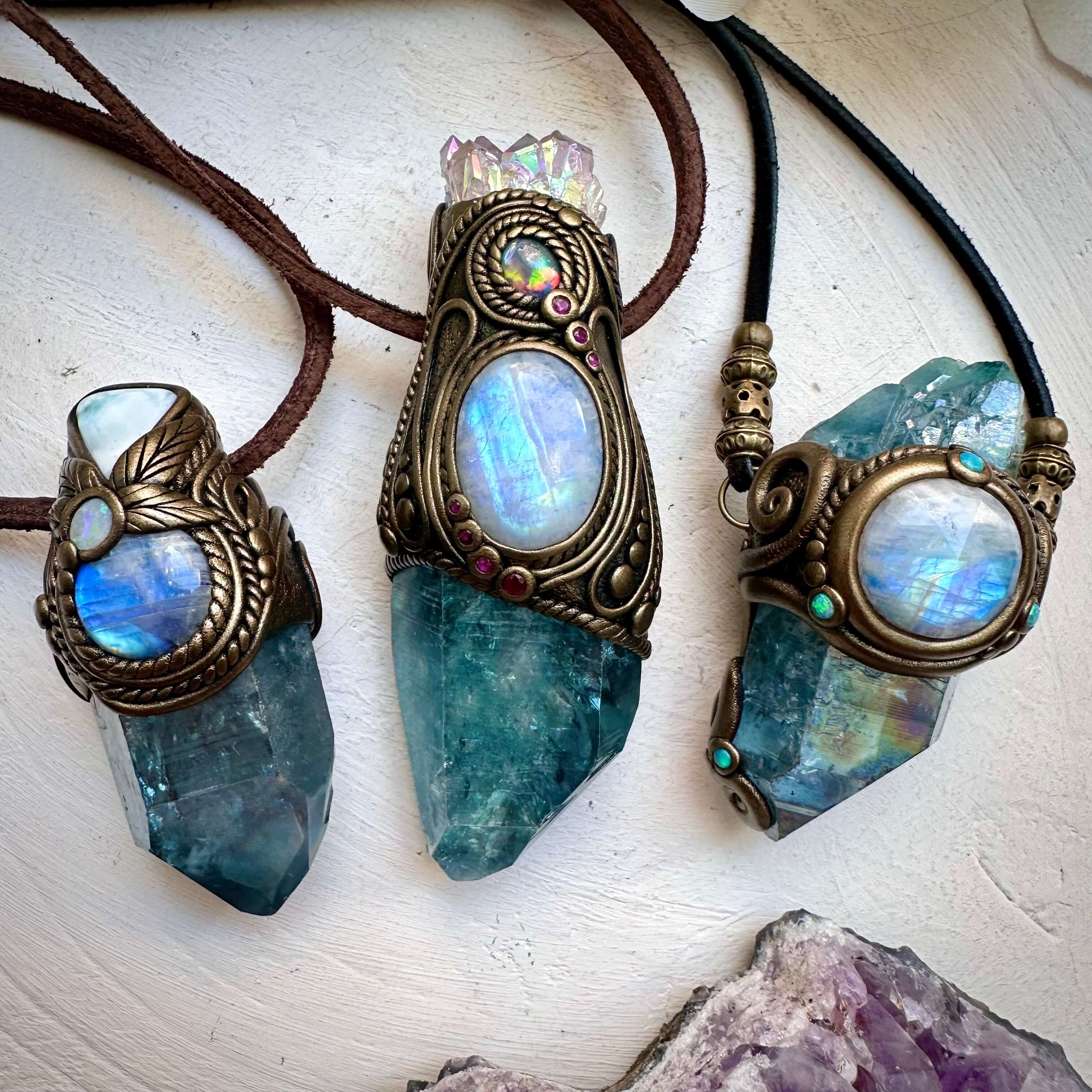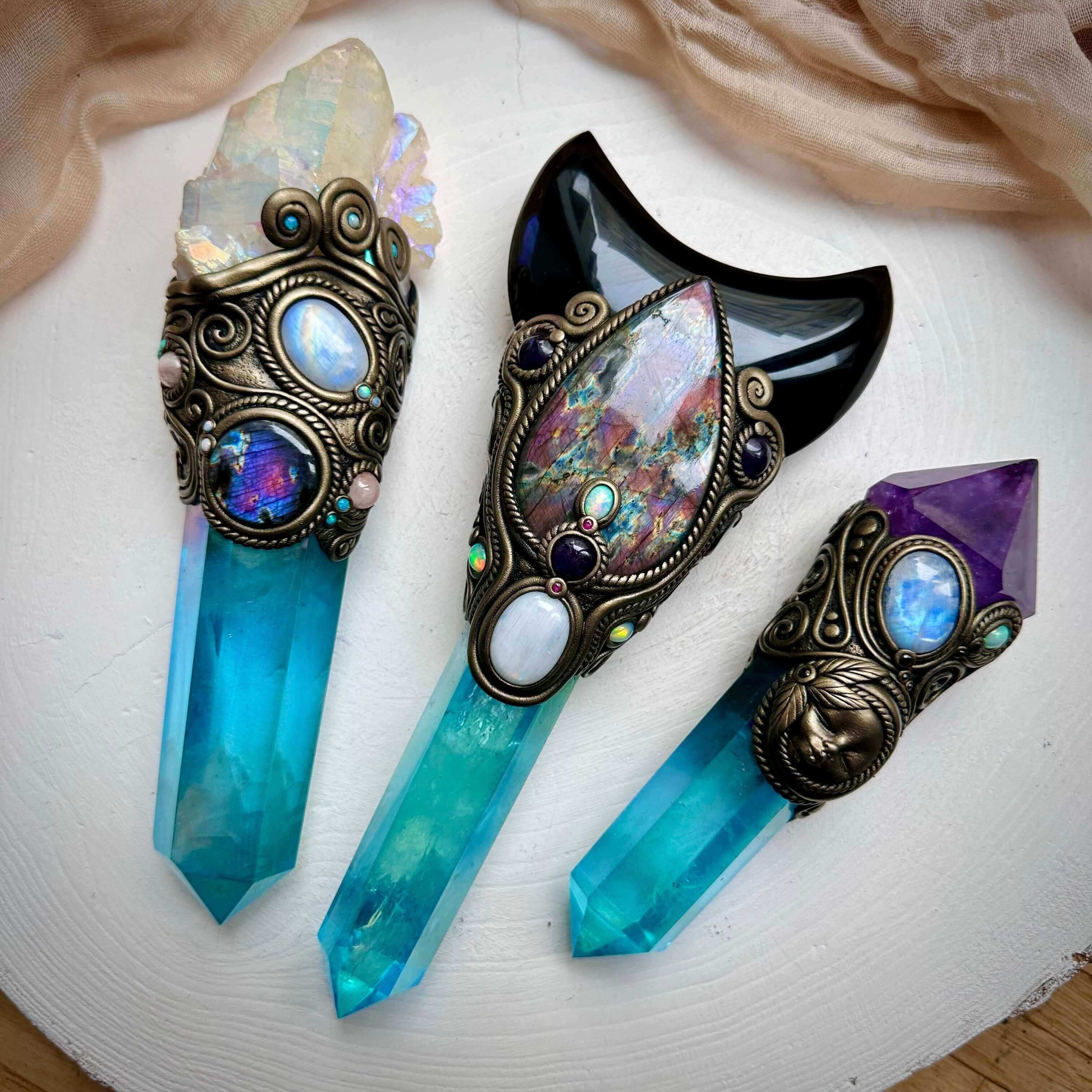How to Tell If Your Moldavite Is Real or Fake: A Complete Guide
With Moldavite’s growing popularity, especially in the crystal healing and spiritual communities, the market has become flooded with counterfeits. Many sellers—often unknowingly—offer fake Moldavite, which is typically just colored glass or lab-made imitations. If you're investing in Moldavite jewelry or raw Moldavite, knowing how to spot a genuine Moldavite is crucial.
In this guide, we’ll help you understand the key traits of real Moldavite, how to test its authenticity, and red flags to watch for when buying.
Why Are There So Many Fake Moldavites?
Moldavite is rare and only found in one region: the Czech Republic, near the Moldau River (Vltava). Because of its rarity and rising demand, prices have increased—making it a prime target for forgery.
Fake Moldavite is often made of melted green glass, created to mimic the look of the real thing. Unfortunately, many of these fakes make it onto global marketplaces.
Key Signs of Real Moldavite
1. Natural Texture and Surface Etching
Genuine Moldavite has a rough, etched surface that appears like grooves or wrinkles. These textures are formed naturally as the tektite cooled and weathered over millions of years. The patterns are intricate but never perfectly uniform.
Fake Moldavite often looks too smooth or has bubble-like air pockets from being poured into molds. If it resembles sea glass or looks “too perfect,” be cautious.
2. Color Variations
Real Moldavite ranges in color from olive green to deep forest green, and occasionally brownish-green. It should have some natural variation in tone—not a neon green or overly transparent look.
Fake Moldavite is often an unnatural bright green or has a consistent tone throughout, without depth or variation.
3. Transparency and Inclusions
Authentic Moldavite may have small bubbles, wisps, or inclusions inside—but these are irregular and natural-looking.
Fake stones may have perfectly round bubbles or appear completely flawless, which is a strong indicator of man-made glass.
4. Weight and Feel
Real Moldavite is lightweight because it’s a type of natural glass. It should feel slightly lighter than a typical stone of the same size.
Fake versions may feel heavier or too solid due to the glass density.
Moldavite Jewelry: What to Look For
If you’re buying Moldavite jewelry, make sure:
-
The seller clearly states the origin (look for “Czech Republic” or “Bohemia”).
-
The setting doesn’t hide too much of the stone (some fakes are disguised under metal).
-
The jewelry includes certifications or guarantees of authenticity, especially for higher-priced items.
Trustworthy sellers usually offer transparency, provenance details, and high-resolution images showing the stone’s surface and clarity.
How to Test Moldavite at Home (Simple Methods)
1. Visual Test (Use a Magnifying Glass)
Look at the surface structure up close. Real Moldavite will show uneven grooves, tiny bubbles, or striations—like ancient wind-worn glass.
2. Light Test
Hold the Moldavite up to a strong light. A genuine piece will show some transparency, with inclusions or streaks—not a flat, even color. You may also notice irregularities in thickness or edge texture.
3. Feel the Energy
Many sensitive individuals feel a warm tingling or “buzz” from real Moldavite. This energetic response, often referred to as the Moldavite flush, is subtle but real. Fakes usually don’t produce this sensation.
Red Flags When Buying Moldavite
-
Too Cheap to Be True: Real Moldavite is rare and typically not cheap. Be skeptical of very low prices or bulk deals from questionable sources.
-
No Origin Info: If the seller cannot state where the Moldavite comes from, it’s a red flag.
-
Neon or Bright Green Glass Look: Moldavite is never a “lime” green or glowing neon. These are signs of fake glass.
-
Glossy or Smooth Surface: Real Moldavite has a naturally weathered texture—not a shiny, polished exterior unless deliberately cut and polished.
Trusted Sources & Certifications
To ensure authenticity:
-
Buy from reputable crystal shops, especially those that specialize in Moldavite crystals.
-
Look for sellers who source directly from the Czech Republic.
-
Some higher-end pieces come with a certificate of authenticity or a guarantee backed by gemological testing.
Final Thoughts: Trust Your Intuition—And the Facts
If you're investing in Moldavite jewelry or raw pieces for healing, transformation, or spiritual work, make sure you’re getting the real thing. Use these visual, physical, and energetic tests to verify your Moldavite crystal and avoid low-quality fakes.
True Moldavite carries the vibration of ancient cosmic fire—powerful, raw, and transformative. You’ll know when it’s real—not just by how it looks, but by how it feels.













